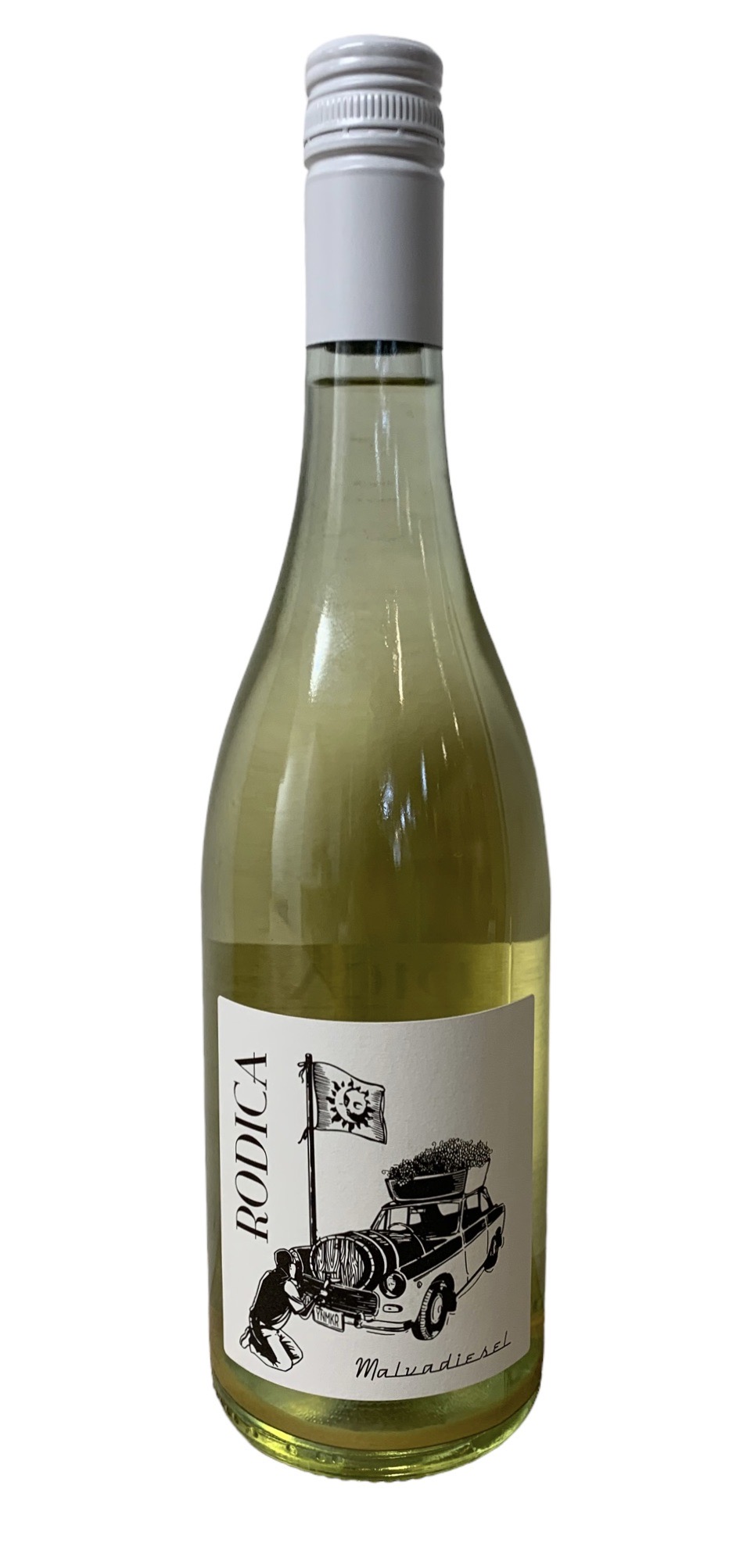
Having grown up in a multi-cultural household, I’ve developed somewhat of an adventurous palate, and have always been eager to try new things from new places. I’ve never previously tried a wine from the Balkans, so I was intrigued when I stumbled upon the cloudy, straw-colored skin contact wine called “Malvadiesel” made by Slovenian winery Rodica. The wine is made from Malvasia Istriana, a white wine grape grown in countries on the Istrian peninsula, namely a small sliver of Italy, Slovenia, and Croatia, where it is the second most common native grape grown. (Fun fact, while Italians pronounce the grape MAL-va-SEE-ya, Croatians will pronounce the grape MAL-VAH-see-ya )
 One evening, I poured some slightly chilled Malvadiesel into a glass, brought it to my nose and smelled an undeniably familiar scent — it took me less than two seconds to identify it as mango pickle, a sweet, tangy, spicy condiment I used to eat on almost everything in my Gujarati household as I was growing up. As I took a sip, I was intrigued at how the wine developed into juicy freshness followed by a slightly bitter tannic finish with only hints of the mango pickle that was so prominent on the nose. This wine was completely new to me, but a delightful experience all around.
One evening, I poured some slightly chilled Malvadiesel into a glass, brought it to my nose and smelled an undeniably familiar scent — it took me less than two seconds to identify it as mango pickle, a sweet, tangy, spicy condiment I used to eat on almost everything in my Gujarati household as I was growing up. As I took a sip, I was intrigued at how the wine developed into juicy freshness followed by a slightly bitter tannic finish with only hints of the mango pickle that was so prominent on the nose. This wine was completely new to me, but a delightful experience all around.
To try and understand Malvasia Istriana a little bit better, I decided to try the same grape made by a different winemaker in a different region: the Matosevic Malvazija from Croatian Istria. I uncorked the bottle, took a whiff, and was met with the same mango pickle scent I found in the Malvadiesel. On the palate there were more subtle flavors that mirrored the juiciness and pleasant bitterness of the Malvadiesel, but with perhaps a bit more minerality and less of the astringency.
These two different versions of Malvasia Istriana, one skin contact from Slovenia, one without skin contact from Croatia both gave me something slightly different but still juicy and delicious. The shared mango pickle aroma was something I couldn’t let go of, so I wanted to understand more about it. I did some research and learned that both the Malvadiesel and the Matosevic Malvazija had spent some time aging in acacia barrels, a common practice for making wine with Malvasia Istriana.
Acacia aging is generally known to give more freshness to wines than oak, while still adding body. One winemaker describes acacia as giving wine unmistakable notes of lemony herb. Is the scent that someone else interprets as “lemony herb” the smell that I identified as “mango pickle?” To further complicate matters, Malvasia Istriana is often described as having acacia as one of its tasting notes. It would seem that the pairing of Malvasia Istriana and acacia is so natural that it’s difficult to know where one ends and one begins.
While I may not be as familiar with Malvasia Istraiana as I am, say, Pinot Noir, I know that I will now be on the lookout for more Balkan wines, eager to learn more about how different elements such as maceration, aging, and terroir all play their part in the final product. Trying unfamiliar grapes and wine from new regions is one of many ways for me to continue discovering more about the world, and I look forward to finding more opportunities to expand my horizons.









